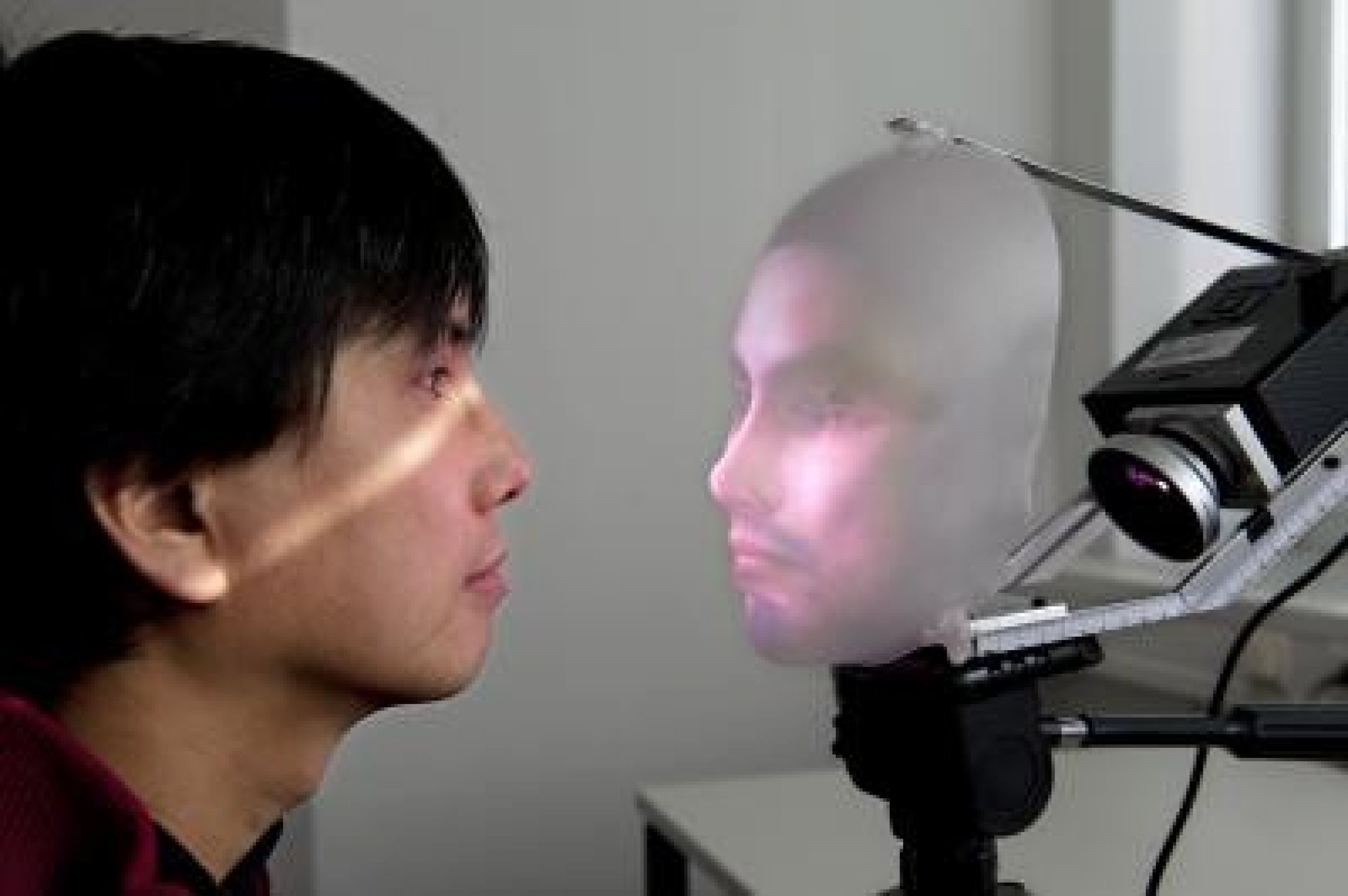Researchers Develop Robot with a Human Face (PHOTO)
German Researchers along with National Institute of Advanced Industrial Science and Technology in Japan have developed a robot having a human face and named it as Mask-bot.
Mask-bot will influence the way in which we humans communicate with robots in the future, said Prof. Gordon Cheng, head of the Institute for Cognitive Systems (ICS) team in Munich.
In order to be used as a robot face, Mask-bot must be able to function without requiring a video image of the person speaking. A new program enables the system to convert a normal two-dimensional photograph into a correctly proportioned projection for a three-dimensional mask. Further algorithms provide the facial expressions and voice.
To replicate facial expressions, researchers developed a talking head animation engine - a system in which a computer filters an extensive series of face motion data from people collected by a motion capture system and selects the facial expressions that best match a specific sound.
Then the computer extracts a set of facial coordinates from each of these expressions, which it can then assign to any new face, thus bringing it to life. A projector positioned behind the mask accurately beams a human face onto the back of the mask, creating very realistic features that can be seen from various angles, including the side.
The makers of Mask-bot use on-board rear projection to ensure a seamless face-to-face interaction and there is only a twelve centimeter gap between the high-compression, x0.25 fish-eye lens with a macro adapter and the face mask.
Researchers say Mask-bot is also bright enough to function in daylight thanks to a particularly strong and small projector and a coating of luminous paint sprayed on the inside of the plastic mask. This part of the new system could soon be deployed in video conferences.
Usually, participants are shown on screen. With Mask-bot, however, you can create a realistic replica of a person that actually sits and speaks with you at the conference table. You can use a generic mask for male and female, or you can provide a custom-made mask for each person, said Dr. Takaaki Kuratate in a statement.
Mask-bot can realistically reproduce content typed via a keyboard - in English, Japanese and soon German. A powerful text-to-speech system converts text to audio signals, producing a female or male voice, which can then set to quiet or loud, happy or sad, all at the touch of a button.
But Mask-bot is not yet able to understand much of the spoken word. It can currently only listen and make appropriate responses as part of a fixed programming sequence.
Meanwhile, the Munich researchers are already working on the next generation -- Mask-bot 2, which will see the mask, projector and computer control system all contained inside a mobile robot.

© Copyright IBTimes 2024. All rights reserved.




















